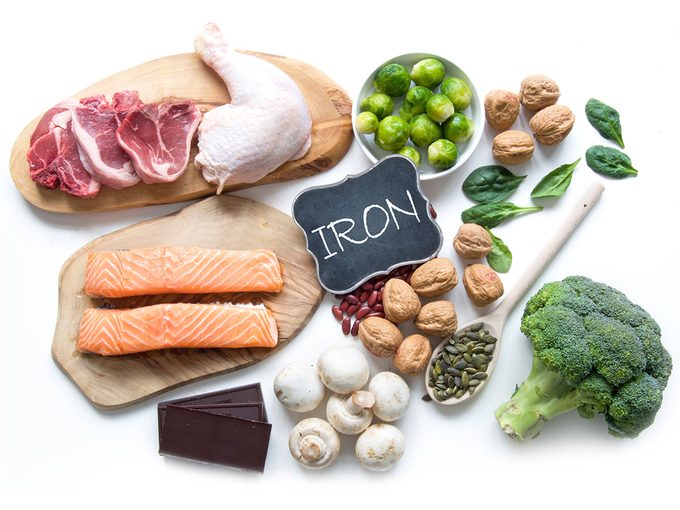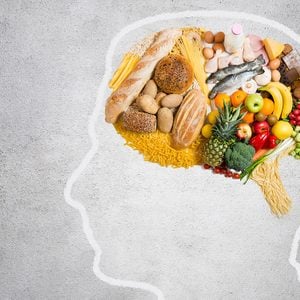Iron Deficiency Symptoms You Should Never Ignore
Close to three per cent of Canadians have anemia. Here's how to make sure you're getting the iron you need.

Sources of iron
All life requires iron. Humans use it to make, among other things, hemoglobin and myoglobin, proteins that help store and carry oxygen throughout our bodies.
Our iron supply needs to be continually replenished with food. Good sources of iron include meat, fish, egg yolks, beans, nuts and dark-green vegetables. (Here are more iron-rich foods worth adding to your diet.) You can boost your intake further by cooking in a cast iron pan: you’ll be eating microscopic pieces of your skillet along with your meal, but your body can use them. Iron supplements are another possibility; as their name suggests, they’re intended as an addition to a nutritious diet when necessary, not a substitute for it. (Find out how to clean cast iron pans if you want them to last forever.)
There are two main types of dietary iron: heme (from meat only) and non-heme (found in both animal and plant sources). “Heme iron is well absorbed by the body,” says Agnès de Sesmaisons-Lecarré, a member of the European Food Safety Authority’s nutrition unit. “By contrast, the absorption of non-heme iron is strongly influenced by interactions with other meal components.” For instance, the muscle tissue in meats or foods rich in vitamin C, such as oranges and tomatoes, can increase its absorption.
Read up on the 13 essential vitamins your body needs to stay healthy.

Iron deficiency symptoms
The body keeps some iron in reserve. However, sustained low intake or low absorption can lead to anemia, which is a lack of healthy red blood cells for carrying oxygen. Possible iron deficiency symptoms include fatigue, shortness of breath, a feeling of being cold, headache, irritability, dizziness, or a paling of the skin. It’s important to address iron deficiency anemia (diagnosed through blood tests) because it can lead to heart problems in the long run.
Iron deficiency anemia can also be a sign of an underlying condition such as celiac disease, inflammatory bowel disease, or colorectal cancer. Because iron is shed with blood leaving the body, other people with a heightened risk include menstruating women and frequent blood donors.
Can you get too much iron?
Short of swallowing far more than the recommended dose of supplements, getting too much iron is unlikely—unless you have hemochromatosis, a genetic disorder that affects up to one in 200 people of Northern European descent. It promotes excessive iron absorption, causing signs such as joint pain, belly pain and fatigue. Left untreated, hemochromatosis may ultimately trigger serious heart or liver trouble, but when managed with a low-iron diet or regular blood removal, it need not become a problem.
Now that you know the iron deficiency symptoms to watch for, find out the healthiest fish you can eat.






